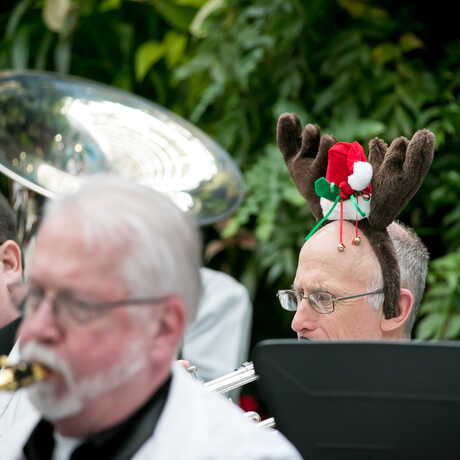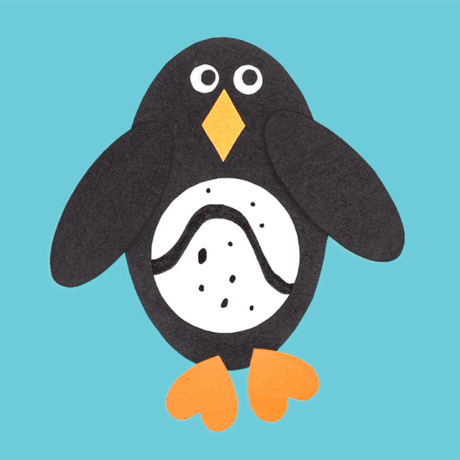'Tis the Season for Science
What has two humps, four antlers, and 24 hooves? A pair of baby camels, reindeer, and yaks, of course—and they're hoofing it to the Academy this holiday!
Welcome the adorable new arrivals to the East Garden by joining our annual winter celebration, featuring festive programs like Piazza Performances and P Is for Penguin, after-hours events like Welcome Winter Night and NightLife: Santa Claude's Workshop (21+), and 60,000 animals eager to offer you their warmest season’s greetings.
'Tis the Season for Science is open daily through Jan. 5, 2025. Buy tickets or become a member today!

Baby animals
It may be winter, but hearts are going to melt: Pairs of baby reindeer, camels, and yaks will take up temporary residence in the East Garden during 'Tis the Season for Science! Each species will be on view for a two-week period, so mark your calendars for maximum cuteness:
- Reindeer: Nov. 23–Dec. 5
- Camels: Dec. 6–19
- Yaks: Dec. 20–Jan. 5

Winter weather
Flurries are in the forecast for San Francisco! Twirl under (non-allergenic, biodegradable, non-toxic, and non-staining) snow swirling in the Piazza twice an hour.
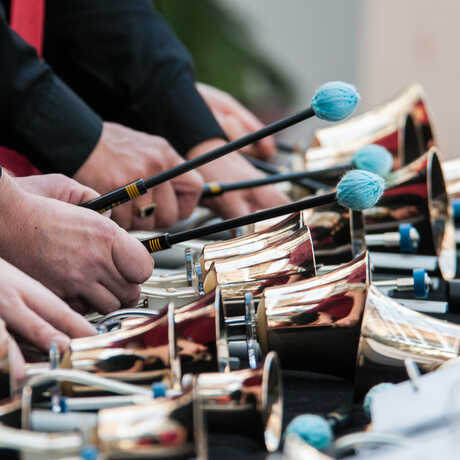
Music and magic
Take a break between exhibits to enjoy a live show! Over a dozen local cultural groups will perform in the Piazza, from choruses to Polynesian dancers to master magicians.
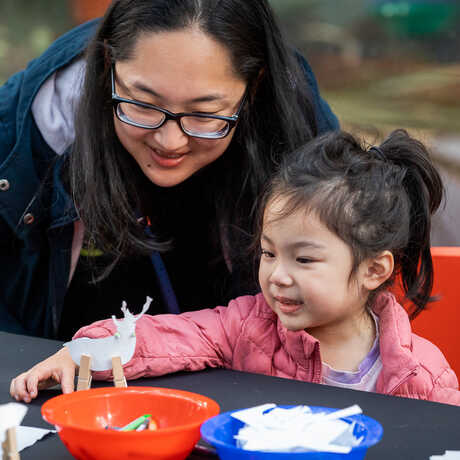
Pop-up programs
Interactive experiences abound on every floor of the museum: Slide into the Ice Lab to conduct cool experiments on the connection between salinity and ice, see a penguin-themed puppet show, create your own wintry crafts, and tour the starry skies in the planetarium.
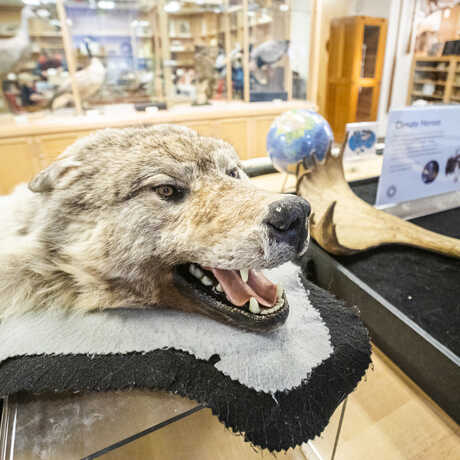
Arctic exploration
There's snow place like the Academy for holiday shopping. From sustainable stocking stuffers to gift memberships, our holiday gift guide has something for science-lovers of all ages.

About our baby animals
The young reindeer, camels, and yaks here at the Academy come from Windswept Ranch, which specializes in animals for events to fund the rescue of other animals. Revenue from reindeer care, for instance, helps support up to 60 rescued animals. They source their animals from trusted, experienced breeders to ensure the animals are well cared for and ready to travel to new places. All of the animals here are juveniles who are weaned from their moms—no longer drinking their mother’s milk, eating solid food like alfalfa and greens, and are fully independent on their own.
Click each section below to learn more.
Do the animals have enough space? Our baby animals enjoy a carefully designed habitat with both outdoor and sheltered spaces, where they roam freely 24/7. Fresh running water is always available, activated by the animals. Their diet is a nutritious blend tailored to their needs, enhanced with special treats. An animal care expert is with the baby animals all day to ensure that they are healthy and responding well to their environment.
How are the animals cared for overnight? The Academy's veterinarian is on-call at all times to address any concerns. We take our responsibility to care for the animals in our exhibits very seriously, ensuring they receive the highest level of care as ambassadors for their species.
Can guests pet the animals? For the comfort and safety of guests of all species—both two- and four-legged—please don’t pet, touch, or otherwise disturb our visiting reindeer, camels, and yaks. Instead, feel free to engage with our friendly Academy staff, who are on hand during public hours to answer your questions and share intriguing facts about these incredible creatures.
Where do these animals come from? The baby reindeer are sourced from breeders, particularly in Washington state. The young reindeer here at the Academy come from Windswept Ranch, and their presence helps fund the rescue of other animals. Revenue from reindeer care helps support up to 60 rescued animals.
What age do they leave their moms? Reindeer are generally weaned, or stop drinking their mother’s milk, around six months. The two male reindeer at the Academy are already seven months old, full of energy, and ready for independent life.
What do they eat? Reindeer have a specific diet that includes alfalfa and specially formulated deer pellets. They also need a controlled amount of salt and copper to maintain proper health. A deficiency in these minerals can lead to serious health problems, so their diet is carefully monitored.
What kind of enrichment do they get? Reindeer are playful animals who enjoy enrichment activities like fighting with street sweeper brushes or Christmas trees set up in their enclosures. They also love playing with balls and other objects they can push and toss around.
Where will they sleep? Just like yaks and camels, reindeer have an outdoor shelter with bedding but often prefer to sleep outside, even in snowy weather.
Are reindeer and caribou the same thing? Two names, one species: Reindeer and caribou are both the species Rangifer tarandus. In North America and Greenland, wild herds are known as caribou, while in Europe and Asia, they’re referred to as reindeer.
How long have reindeer been human companions? About 2,000 years ago, the Sámi people of Scandinavia began herding reindeer. Archeological evidence from northern Siberia suggests they were also harnessed for pulling sleds around the same time. These remarkable animals continue to be a vital part of many Arctic and subarctic cultures, providing food, clothing, and transportation.
Where do these animals come from? The juvenile camels here at the Academy come from Windswept Ranch, who source them from reputable breeders and experienced breeders to guarantee they’re well cared for and prepared for their journey to new homes.
What age do they leave their moms? Baby camels are typically weaned, or stop drinking their mother’s milk, by six months old. From then on they are fully independent from their mothers. The camels here at the Academy include a six-month-old female with striking blue eyes and a “painted” or two-tone coat, and an 11-month-old male.
What do they eat? Camels are more sensitive to mineral levels than other animals. Their diet includes alfalfa, mixed greens, and salt. Copper supplements are sometimes needed to prevent deficiencies, especially for pregnant camels, whose mineral levels are monitored carefully to ensure a healthy mom and babies.
What kind of enrichment do they get? Camels are worked with individually, engaging with handlers to keep them stimulated and accustomed to human interaction. They also enjoy rubbing against brushes for physical enrichment.
Where will they sleep? Camels have an outdoor shelter here at the Academy but often choose to sleep outside, even in cold weather. Camels are highly adaptable to different climates.
What are those patches on a camel’s knees and chest? Camels develop calluses on their knees and a distinctive heart-shaped one on their chest. These calluses protect them from the hot sand, with the chest callus lifting their body just enough to allow air to circulate underneath—a remarkable adaptation!
How long have camels been human companions? Dromedary camels were first domesticated around 4,000 years ago, around 1000 BCE in the Arabian Peninsula. They have been essential to transportation and trade ever since.
Where do these animals come from? Yaks, originally from the Himalayas, thrive in colder climates. They are often born in late spring, ensuring they are strong enough for harsh winters when they're weaned. The juvenile yaks here at the Academy come from Windswept Ranch, who source them from reputable breeders.
What age do they leave their moms? Yaks are usually weaned, or stop drinking their mother’s milk, around four months old. The juvenile yaks here at the Academy have already been weaned and are living independently from their moms, giving the mothers time to rest and prepare for nursing the next year’s calves.
What do they eat? Juvenile yaks no longer drink their mother’s milk, and primarily eat alfalfa and mixed greens, along with salt supplements to ensure a balanced diet.
What kind of enrichment do they get? At the Academy, enrichment for yaks involves quiet interaction. People may sit with them and read aloud using a quiet tone. This helps them grow accustomed to humans, recognizing them as part of their herd.
Where will they sleep? Like many animals from cold climates, baby yaks prefer sleeping outside, even in the snow! They have a shelter available with bedding, but it’s their choice to use it.
How long have yaks been human companions? The wild yak (Bos mutus) was probably first tamed by the Qiang people of the Tibetan Plateau over 10,000 years ago. Today, yaks remain vital to their culture, offering milk, meat, wool, and transport in the region's rugged terrain.
















